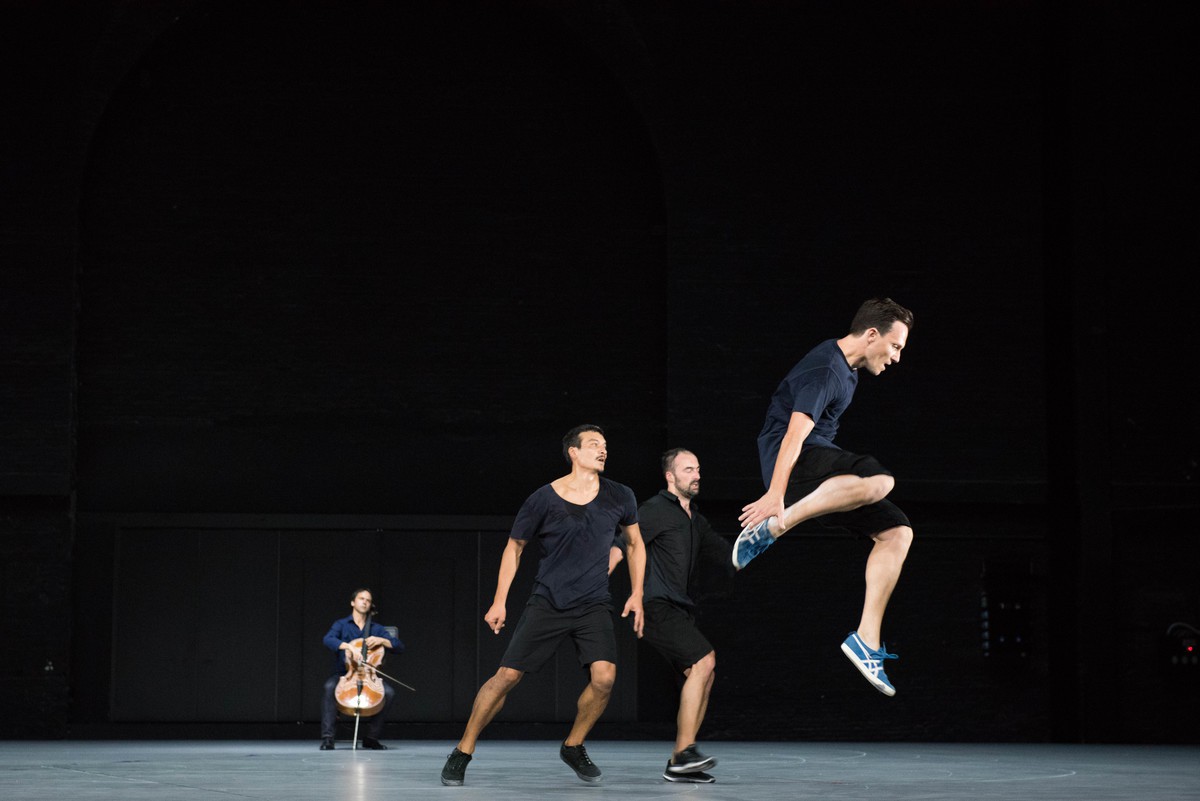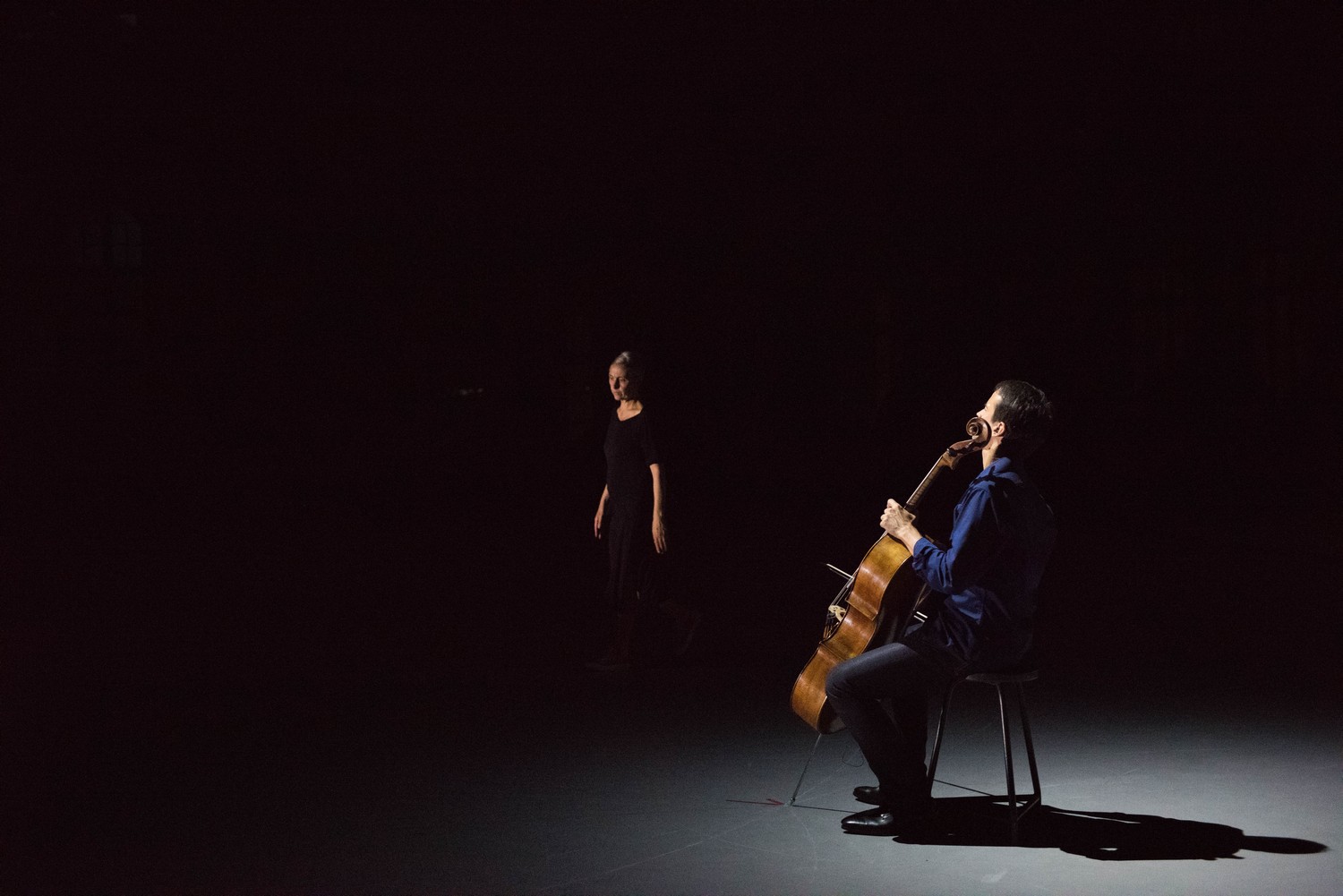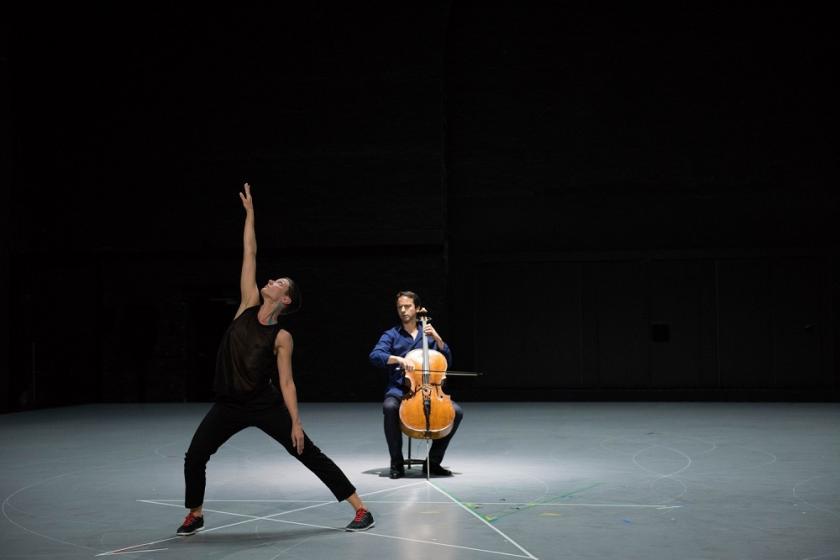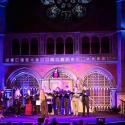All Bach is dance, a teacher once told me. The justifiable exaggeration switched on a light; leaping to the Brandenburg Concertos followed. This great work of kinetic art is of a different order. Choreographer and performer Anne Teresa De Keersmaeker represents the pure but vibrant mastery of the Cello Suites in the way that the soul moves with them, responsive to every hyper-dance form, key and modulation. Using only five dancers including herself from her Rosas company on the bare Sadler's Wells stage in equal partnership with the magisterial playing of Jean-Guihen Queyras, she balances the human and the abstract in a riveting and emotional two-hour narrative.
So much of human life is here, touched by the divine. De Keersmaeker uses lines from a medieval hymn translated by Luther which also appear on Pina Bausch's gravestone: "Mitten wir im Leben sind/Mit dem Tod unfangen" ("In the midst of life we are in death"). The trajectory, with each suite prefaced by taping or inscription of geometric patterns which will only be visible to the audience in the theatre's upper reaches, takes us through one suite per dancer, De Keersmaeker joining them in each Allemande, until the great C minor Suite. Fissures open up in both the expression and the music of the Fourth, leading to the Fifth's meditation on mortality before a final celebration for all six performers.
That this would be serious work to enrich, rather than distract from, Bach's genius, seemed assured by the involvement of Queyras. Last year I heard him perform all six suites across a day at the East Neuk Festival, informing them with short more-than-encores by Kurtág. His perfectly-intoned stream of consciousness seemed like unimprovable perfection. Some might want a bigger range of characterisations, but that came here from the dance. Queyras takes up six positions at various places on the stage. The unearthly beauty he draws from his 1696 Cappa cello is muted, but not too much, at first by his sitting with his back to us as Michaël Pomero lays out the essence in the First Suite (pictured below, Pomero with Queyras, Boštjan Antončič and Julien Monty).
Marie Goudot, a supremely charismatic dancer, does the listening crouched with heels raised - so unexpectedly moving - and something Ariel-like in her performance intensifies the buoyancy of the C major Suite. She's also the only dancer to smile, very occasionally; the joy is confined to the bodies, and of course to Queyras's expressions, when we can see him, as well as his playing. But the exhilaration is disrupted as Queyras breaks off and Goudot moves with De Keersmaeker into silent dance. Are they still hearing the unplayed music in their heads? The mystery doesn't need answering.
The one interpretation with which I might differ, response-wise, is what Boštjan Antončič brings to the E flat major, Fourth Suite. I hear its Prelude as an intensified at-one-with-the-worldness to follow the Third; Antončič obsessively dips his head, suggests a mania that can only lead to fragmentation. Intense and fierce, he has the longest stretch of unaccompanied dance. This is where, it seems, the breakdown occurs. Only De Keersmaeker appears, wraith-like, on the fringes of the light shone on Queyras in one of the numbers from the great C minor Fifth Suite (pictured below).  The most celebrated and moving of all the Sarabandes, played with very sparing vibrato, is left to Queyras, his cello and their shadows. The rest of the suite has to be silence. It means, of course, that Queyras doesn't give us the advertised feat of playing every movement of all six suites in a single evening; but the reasons are totally artistic.
The most celebrated and moving of all the Sarabandes, played with very sparing vibrato, is left to Queyras, his cello and their shadows. The rest of the suite has to be silence. It means, of course, that Queyras doesn't give us the advertised feat of playing every movement of all six suites in a single evening; but the reasons are totally artistic.
Because then, after a major re-tune, comes the almost unplayable Sixth, pure light, a kind of afterlife but very much celebrating the here and now (Steven Isserlis, proposing a take-it-or-leave it New Testament programme, hears in this "The Resurrection"). The cellist is now at the very back of the stage; the collective dance-walks towards him, the meditative lie-ins and the joyous acrobatics speak for all humanity. If I could see it all again tonight, I would. Go; you won't witness a more perfect artistic collaboration this year.













Add comment